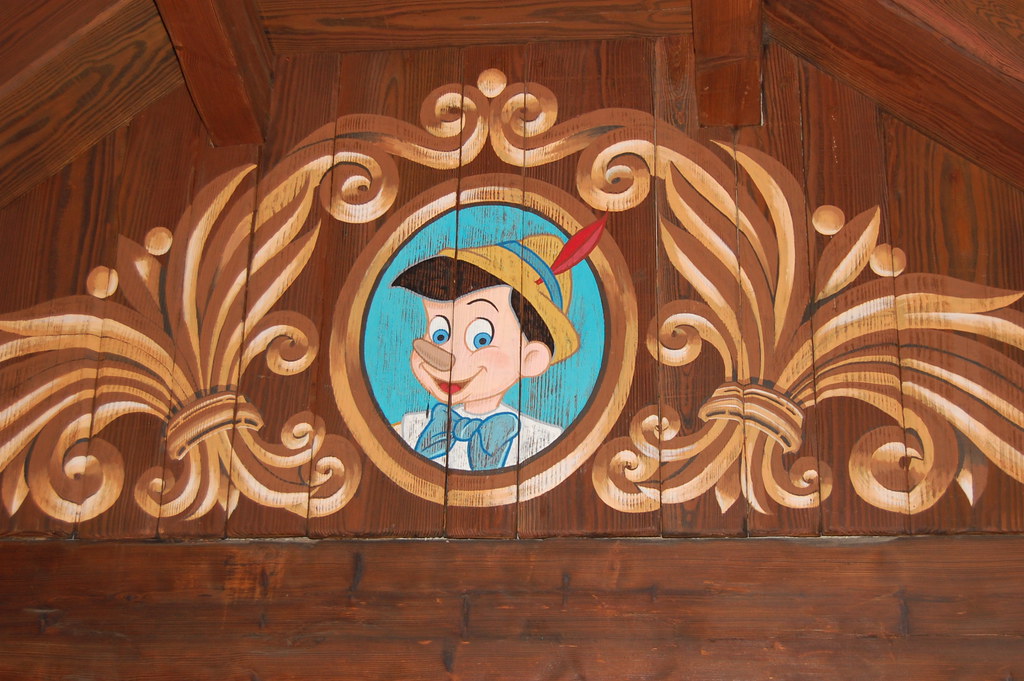«Once upon a time… - A king! - my little readers will immediately say. No, guys, you were wrong. Once upon a time there was a piece of wood. " Thus went the incipit of what would become one of the best-known books of Italian literature. It is the story of Pinocchio told by Carlo Collodi, born Carlo Lorenzini. A hilarious succession of events in which the protagonist throws himself headlong. But also an intertwining of characters whose salient features give the narrative the appearance of a story not only for children.
Pinocchio: the first draft
Passed from the hands of Mastro Ciliegia to those of Geppetto a simple piece of wood one day takes the form of an animated puppet. Bratty and mischievous, for much of the story, Pinocchio does not seem to be expressing gratitude towards the carpenter who regards him as a son. It promises but does not deliver. Like when at school he prefers the Puppet Theater obtaining the ticket from the sale of the abbecedary that Geppetto had bought for him with difficulty. Or when he lets himself be seduced by the Cat and the Fox failing to undertake to bring the five sequins given to him by the "carpenter father" Eater. Furthermore, one of the key characters is already encountered at the very first.

The talking cricket who, while alive, has just the time to scold Pinocchio once. In fact, instinctively the puppet, annoyed by Grillo's warning words, throws a hammer at him. A gesture that is not enough to silence the "consciousness that is inside each of us" and so the specter of the Cricket will continue to appear to him throughout history. Cheated by the Cat and the Fox, later disguised as brigands, Pinocchio tries to escape by hiding the gold coins in his mouth. But he just has time to knock to the house of the Blue Fairy who is immediately caught and hanged from the branch of an oak. Here ended the first draft of the work that Collodi had published in episodes in 1881 in the Giornale per i bambini. Then? What happened?
The continuation of Pinocchio
It seems that Collodi did not believe too much in his work, considering it a "childish"! A truly surprising start if we think of the feedback that this production aroused. And it was the popular interest, together with the requests of Ferdinando Martini Director of the newspaper, to move the author. The story then had a sequel and changed its title. From "The story of a puppet" to "The adventures of Pinocchio". A way was then needed to free the protagonist from the branch on which he had been hung at the end of the "first series". And this is how the character of the Blue Fairy, previously just mentioned, is outlined. Once again, Pinocchio does not seem to have changed. Again Collodi chooses to emphasize the aspect that most characterizes it. A relentless ungrateful liar.

Robbed and unjustly convicted, Geppetto is in despair not knowing where to look for him. Thus he leaves for America but ends up swallowed by a and shark. Between one adventures and the other Pinocchio, free from prison, is helped several times by the Blue Fairy. More mature, he promises to behave well, to study and go to school. In return, the Fairy will one day transform him into a real child. Yet again the puppet "falls into error". In Land of Toys Pinocchio is transformed into a donkey with his friend Lucignolo. Once again it is the Fairy who frees him from trouble. And Geppetto? Pinocchio ventures into the sea to look for him. Having entered the belly of the great Shark, the puppet rescues his father. Still some other story follows but in the end Pinocchio finally manages to become a real boy.
Characters…
Pinocchio is the protagonist of the entire work. Other characters play, together with him, a fundamental role in the narrative. Without them, some salient features of the puppet himself would not have arisen and the story would have fewer meanings. First of all Geppetto. Simple and quick-tempered but at the same time good-natured. Forgive all the misdeeds of Pinocchio to which he is inextricably linked following a life spent as a lonely man. In the story, some descriptive details, such as the fire drawn on the wall to symbolize the hearth, underline the poverty of Geppetto. An aspect that gives even more value to the actions that the carpenter performs for Pinocchio. Then there is the Talking Cricket. The consciousness that speaks within each of us and that although at times we would like to silence continues to manifest itself.
… And their characteristics
Follow the cat and the Fox. Shrewd scammers but only with the naïve willing to be deceived. They represent temptation, the easiest way to wealth. Petty because they carry out their plans with the weakest. However, three are wrong. Even Pinocchio cannot in fact be excused. The Cat and the Fox symbolize one of the most vulgar and cowardly aspects of reality that however exists, therefore it is good to be on guard and know how to deal with them. Finally the sweet Blue Fairy. It acts like a mother. At some point she acquires the appearance of an ordinary woman. He is not just a character who uses magic to get Pinocchio out of trouble but he has an educational value. His words are aimed at making the puppet think, as when he uses the metaphor of short-legged and long-nosed lies.
An exceptional success
"The Adventures of Pinocchio", transposed into 240 languages, is in fact the second most translated work in world literature as well as the first among the Italian ones. Perhaps it is surprising to think that there is eleventh place Harry Potter but at the same time, this data, resulting from a 2015 survey, further reinforces the value of a timeless story.




